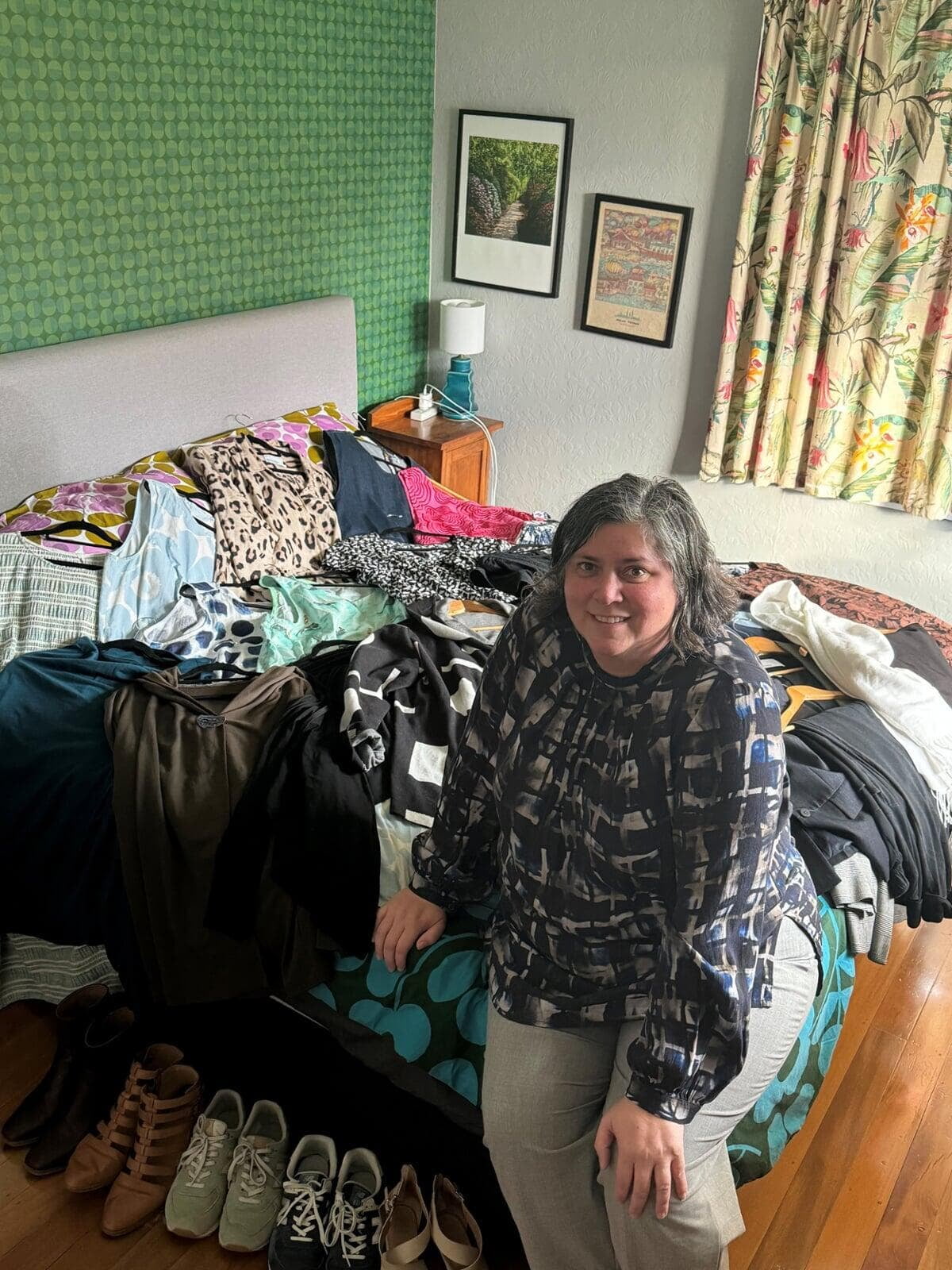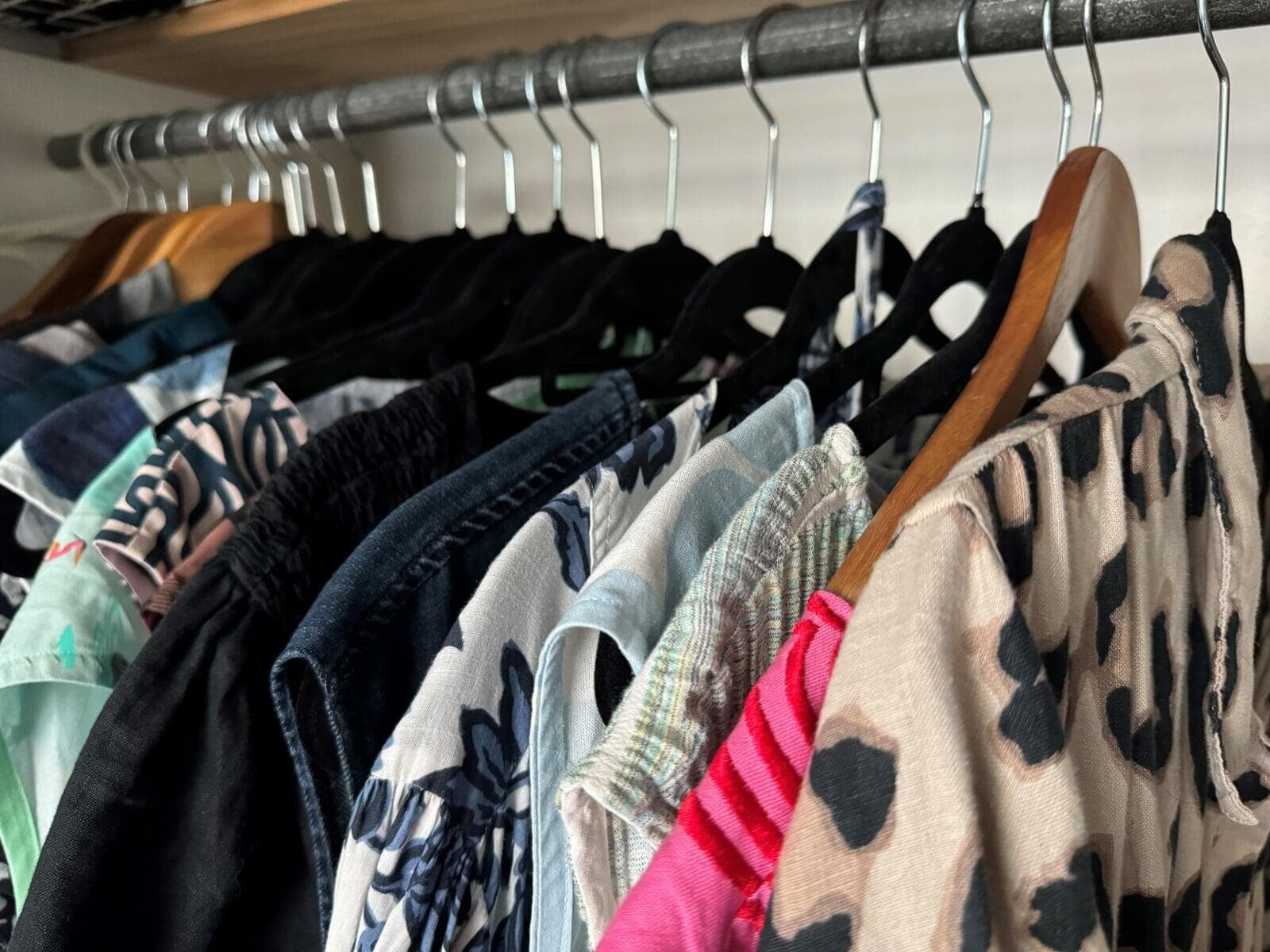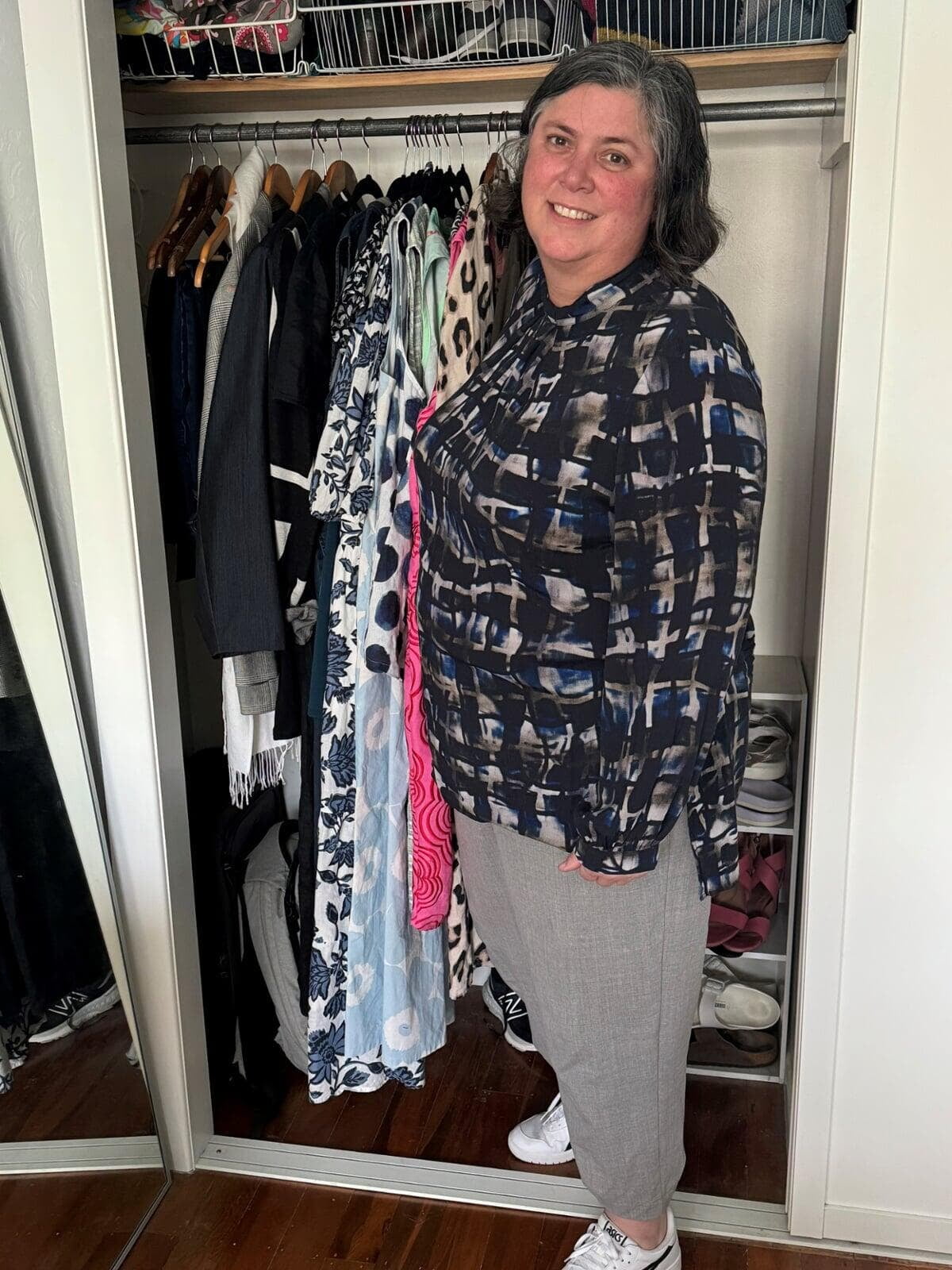Alice Grace, a self-confessed fashion lover, director at Morrison Low and former WasteMINZ Board Member shares her motivations and learnings from using a capsule wardrobe over the past 12 months, and tells us what the industry could take away from her experience.

Shining the spotlight on textile waste
I loves clothes; I love wearing stylish outfits, I love shopping for clothes and I especially love creating my own clothes with my sewing machine. I’m also a pragmatic engineer with nearly 30 years’ experience in the waste and resource recovery industry – a job I love. These passions have been on a collision course lately with a spotlight being shone on the growing problem of textile waste.
The disposal of textiles has nearly doubled in the last ten years in New Zealand and we now landfill around 200,000 tonnes of textiles every year. Textile waste is also a major contributor to greenhouse gas emissions and the manufacturing of textiles has been linked to modern slavery and significant environmental pollution.
Wearing a capsule wardrobe
Recently I’ve been helping councils prepare their Waste Assessments which has brought a focus to the problem of textiles, so I looked around to see what I might do to reduce my own textile waste. My internet searching led me to look into capsule wardrobes and how the use of a restricted number of clothes can help to reduce textile consumption.
There’s lots of different ways to adopt a capsule wardrobe, but I found one called Project 333 which seemed practical and not overly restrictive. For 3 months you restrict your wardrobe to just 33 items. These include shoes and accessories, but excluded underwear, sleepwear and clothing for exercise. I decided to add an ‘Alice rule’ so that I could keep doing my favourite hobbies – I could add up to 3 items to my wardrobe in any 3-month period if they had been handmade or hand-modified by me or someone I know. I also didn’t get rid of any clothes or fabrics, so I now have a large shop at home from which to select clothes and fabric for years to come.
Once I’d selected my 33 items, I got a major shock about how small this selection seemed relative to the two wardrobes full of clothes I owned. I was equally surprised how easy it was to only use 33 items – I didn’t feel like I was wearing the same thing all the time, I found it easier to decide what to wear and I had less days when I felt I’d chosen the wrong outfit. Using less turned out to be easier than I expected and I’ve continued the seasonal capsule approach for the past four seasons (twelve months in total). I’ve also turned my mind to where else in my life I have more than I need and how this might relate to reducing waste as part of the circular economy.

What I learnt about the circular economy
A catalyst for change
You can break the cycle of buying more than you need (or wasting more resources than you should), but you probably need a catalyst for it. For example, councils are introducing organic collections and many are moving to fortnightly rubbish collection at the same time. The restriction in rubbish disposal volume available to households creates a catalyst to use the organics collection service. Another example is training transfer station staff to be resource recovery ambassadors that can provide a personal touch with their customers, gently encouraging them to separate their recoverable items before they dispose of the rest.
Improving repairability and longevity
As part of my capsule wardrobe journey, I read more widely about textile waste around the world, including what happens when textiles received in clothing bins are shipped overseas for recycling e.g. from the United Kingdom to Africa. Long ago, before fast fashion, quality clothes were received in clothing bins, and the countries that received these had a steady source of high-quality clothing to refashion into high-quality clothes for their local market. Over time the quality has diminished, eroding the viability of this recycling system. Likewise, the quality of these fabrics means they are not worthwhile mending. A product stewardship scheme that placed the responsibility and cost of end of life management on textile manufacturers, like the container return scheme being considered for beverage containers, could go a long way to focusing manufacturers on durable, repairable, recyclable textile.
The textile industry is not the only industry to suffer from a loss of durability of products. You cant reliably buy a second hand fridge, toaster or bookcase anymore. And yet, the resources that go into manufacturing these goods are still the same. Product stewardship, whether through regulated government schemes or voluntarily introduced in response to consumer expectations, are needed to tackle this problem…before they all become single use items.

Addressing the unintended consequences
While the capsule wardrobe was great for me, what if you cant afford quality clothing that can last at least three months? Every year there are news stories about the cost of school uniforms. Schools try to balance durability of their uniforms with affordability, but its very difficult to keep the costs down relative to the cost of fast fashion. If we improve the quality of materials to reduce waste, we need to weigh up the wider social implications and find solutions that address these alongside waste reduction benefits. What if you could borrow or rent a school uniform in the same way you do for a sports team uniform?
In the last 12 months I have noticed that I have been less adventurous in the colours and styles of clothes I’ve chosen in my capsule wardrobe. I’ve been less innovative with what I wear. I’ve begun to wonder if using less naturally means innovating less and whether this might stifle innovation in other areas too. For example, what if we were still using first generation smart phone technology today? In designing policy settings (the catalysts that drive change) we need to consider both the upside and downside of our decisions and tackle the potential unintended consequences of our policy objectives.
Where to from here?
As I come to the end of twelve months wearing a capsule wardrobe, I’ve been pleasantly surprised how much its taught me about the waste industry I work in and how small catalysts in one area can drive a desire for change in others. Durability and repairability of consumer goods is a must, but we need to address potential downsides too and ensure that these goods remain accessible for all parts of our community and that we can keep innovating as we use less resources.
